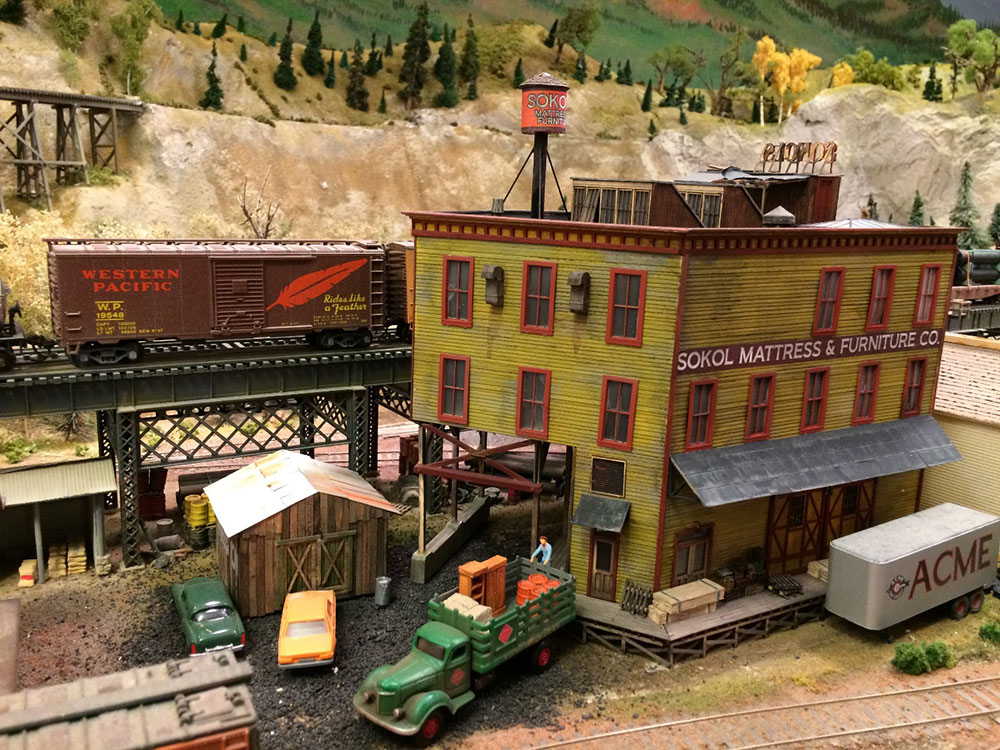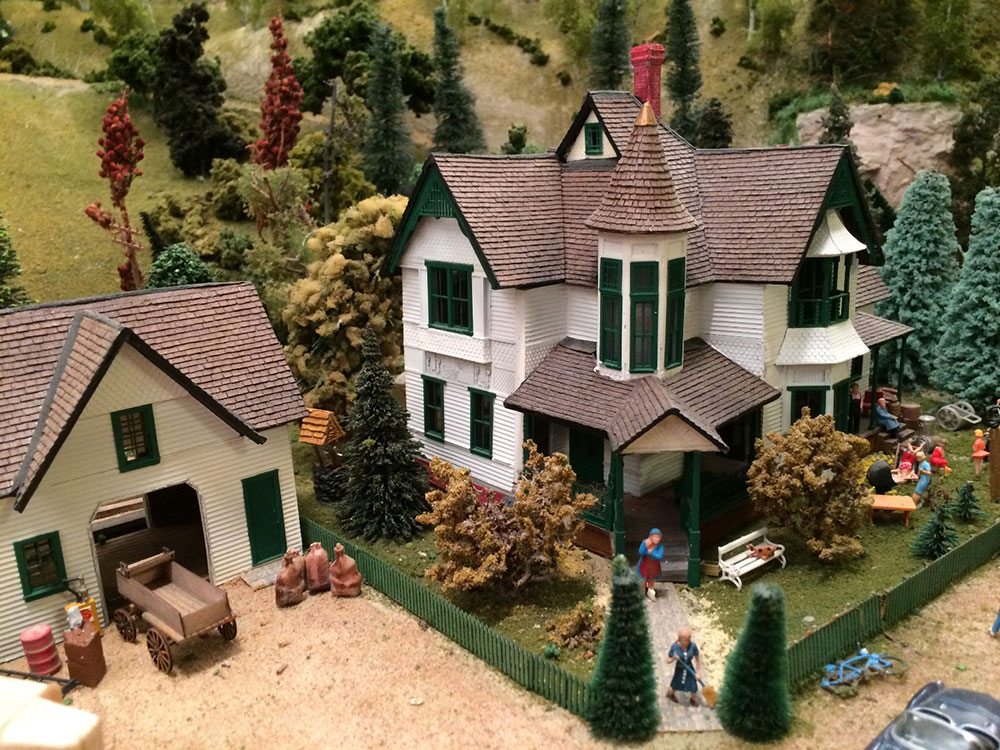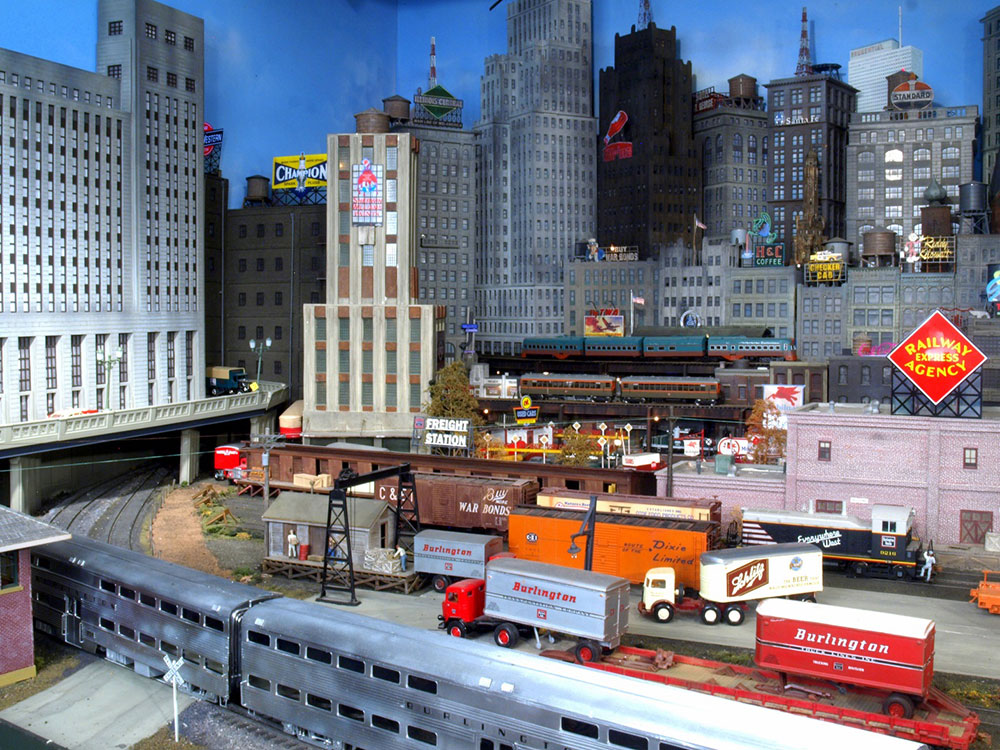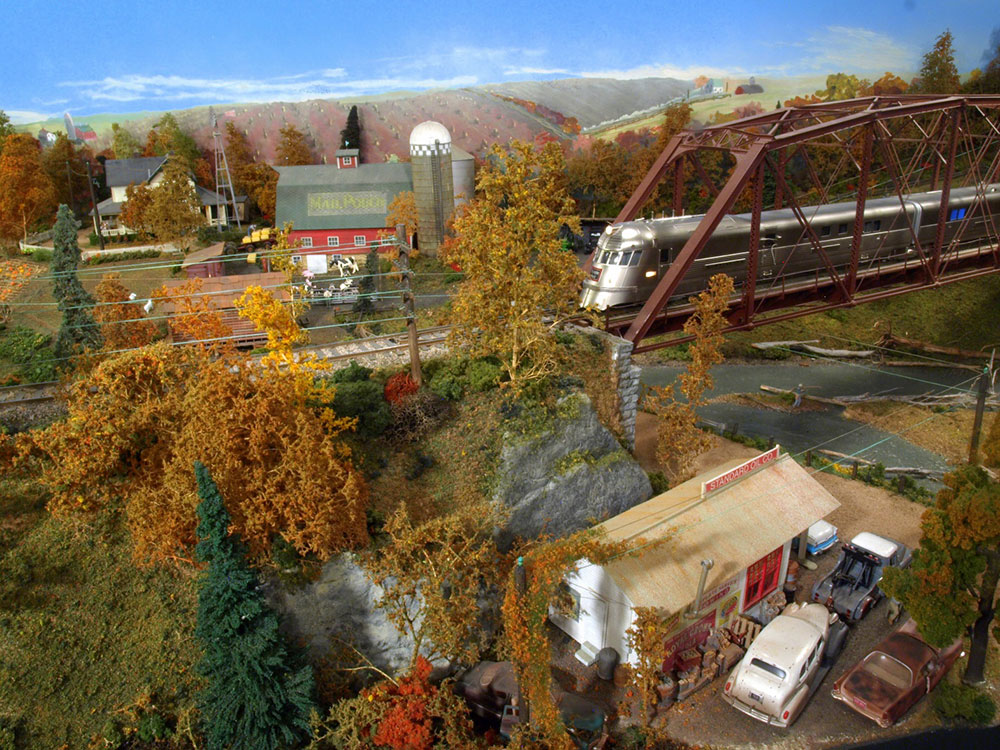Model railroad structures are important in many ways, and by “structures” I’m including bridges and other man-made, primarily fixed elements that we include in our layouts. Structures can be assembled from combinations of wood, stone, concrete, or steel. They can be loading docks, a wooden pony truss bridge, a stone retaining wall, a concrete viaduct, or a steel arch bridge. They can also be a shed, a roundhouse, or a massive factory. They can be fences and billboards, too.

They are all “stage props” that set our three-dimensional scene in many ways. The upkeep status might denote financial stability or present usefulness, just as the architectural design and construction materials might display a vision of prosperity and long term viability of the structure. Signage on a building might reveal previous owners or uses.
Related video: Making Removable Model Railroad Structures

We can use structures as scene breaks and view blocks as well. They can create a peek-a-boo effect and direct a sight line. Forced perspective can be applied to tremendous effect. Building shapes and truss bridges can add angularity and interest to a scene.
I like to build cardboard building mockups wherever it’s feasible to visualize a scene from all the available viewing angles. A mockup can be used whether you’re kit bashing or scratch building. I can then modify the shape to fit comfortably into the scene. I will normally let my mockups sit on the layout for a time while I ponder them. After the shape is set, I can draw in windows and doors to study the placement. Sometimes I end up installing the finished sheeting right over my mockup!
Related video: Stress-Free Model Railroad Layout Design with Mockups
Here’s another thought. A building or a grouping of buildings being used as a scene break could be designed and detailed as completely different buildings from the opposing viewing angle. That’s a great way to make your layout seem bigger than it really is, and who doesn’t want a bigger layout! Impressions of size and scale are not limited to the square footage of your layout surface.

As for “forced perspective,” a large or tall structure can be designed to fade into a vanishing point, even if only very slightly. In a future how-to video segment I plan to talk about vanishing points in more detail. Vanishing points are a part of our natural visual experiences daily and make for interesting study. They can really enhance a scene, and again make your layout seem bigger than it really is.
Diminishing scale with distance works too. My buddy Steve (Mr. Clack), uses HO scale buildings to the rear of his S scale Chicago scene very effectively.
Related video: Kitbashing HO Model Railroad Structures

A distant mountain top village on an HO layout could be built in N scale as an example. Foreground structures can have more distinct color while background structures should be muted in color.
Bridgework can add a linear element to a mountain scene and act as a connecting link for scenes separated by say, a gorge or a river. Bridges can also be used as a view block. A common application would be to hide a three-dimensional scene that’s merging into a backdrop.
Related video: Building Sturdy Model Railroad Bridges

Fences can delineate property lines and act as a scene break. Irregular shapes are great. A patchwork of properties has the ability to change a large, open scene to multiple smaller scenes. Billboards and business signs can have the same effect.
Related video: Creating Model Railroad Streets and Fences

On another visit to the Citrus District I plan to be part (or all) of the train crew and spend a day switching. I hope you can ride along.
We’ve got lots more videos on the subject of model railroad structures. For a complete listing of videos, check out the category here.
More in this series:
So You Want to Build a Model Railroad Layout?
Choosing Model Railroad Track Configurations
Assigning a Theme for Your Model Railroad Layout
Ideas for Unique Layout Concepts
Tips on Trackwork
Helpful Tips for Model Railroad Wiring
Ideas for Adding Personality to Model Railroad Layouts

That is some great picture's very very real looking, I should know i worked for the LIRR for 27.5 yrs, nice going. Robert M.
Need somebody build railway 732 309 4200 cel
This is a great way to get a beginner to begin trying some of his existing skills and begin to add the needed skills to his "tool box". I found as time goes on and many attempts of getting that "perfect" building or scene, nothing in real life is perfect.
Question: A bus wire and drop feeds work great to power the track on a large layout. Can you use a similar bus wire system to wire the lighting AC system?
Interesting but, no mention of 0 gauge modeling. ¿Where can I get ideas for that scale?
Nice photos and some good ideas.
I have found that old matchbook covers make very realistic billboards in O scale. They are fairly common collectibles from the 1950s era. The hunt is fun and the realism on your pike is worth the time spent looking.
These photos are breathtaking! What is the best place to buy the buildings, or did you create them yourself? Thanks so much!
Beautiful photography and a great perspective on a variety of methods to improve overall visual impact.